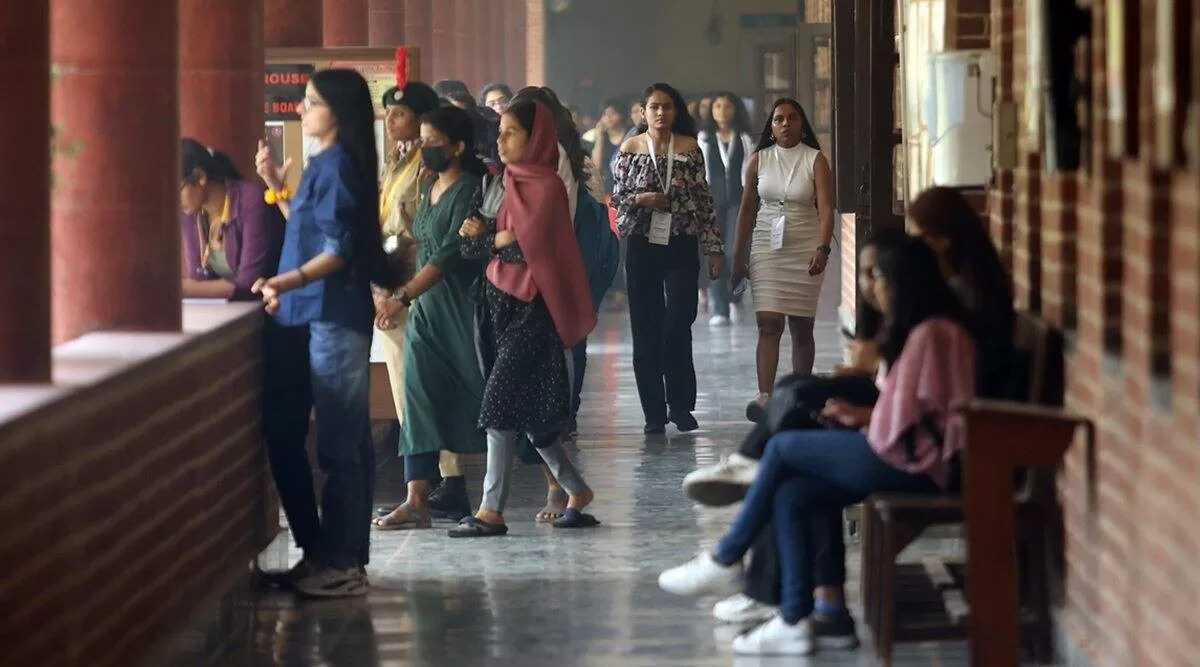Given India’s cultural ambience, international students can get a world-class learning experience near their home country. (Express/File Photo)
The cumulative effects of the enabling provisions in the new UGC proposal must be seen as a catalyst for transforming higher education in India
Written by Mamidala Jagadesh Kumar
January 11, 2023 07:17 IST
With the launch of the National Education Policy (NEP) 2020, the world is looking at India as an ideal destination to establish campuses and invest in the higher education sector. The NEP also envisions that India will be promoted as a global study destination that provides affordable, excellent education. Establishing foreign campuses will provide wider educational choices, exposure to innovative pedagogical approaches and the potential for collaboration with world-class institutions.
By fixing a benchmark of allowing only the top 500 foreign universities in India, the draft UGC regulations have an in-built mechanism to ensure the entry of only the highest-quality institutions. Foreign higher education institutions (FHEIs) intending to come to India will be experienced in imparting education and with robust financial resources, integrity, long-term commitment, and a better understanding of the venture’s feasibility. The FHEIs that intend to open campuses in India are expected to have adequate financial and other resources. They should also arrange for appropriate physical infrastructure in terms of built-up spaces for their academic programmes.
The draft regulations empower the positioning of India as an affordable value player in the global education sector. Campuses of foreign HEIs will attract students from the Global South as students worldwide will find the high-quality education in India appealing. Given India’s cultural ambience, international students can get a world-class learning experience near their home country. It is precisely to provide an environment for interaction that the regulations say that academic programmes in the FHEI campuses need to be in physical mode.
The draft regulations are also a breath of fresh air, giving more viable options to the four lakh or so Indian students who head overseas each year for transnational education. Many students who plan to go abroad will continue to do so to study and work in a different environment. However, many may not be able to due to family or financial situations. While some may think studying in a foreign country is about much more than just earning an international degree, FHEIs will provide opportunities for students who do not wish to immigrate to stay in India and study at a foreign university. This can be a win-win situation because Indian students will be able to access high-quality education living in India while foreign universities can cater to huge numbers.
However, all this will only happen with enabling legal and regulatory structures. The establishment of foreign campuses will be facilitated through the provisions of the Foreign Exchange Management Act 1999 and its rules. A few representative ways in which FHEIs can establish campuses are: As a company under the Companies Act, 2013 and operate the campus through this company; via the Limited Liability Partnership Act, 2008; as a joint venture with an existing Indian entity such as a university or setting up a branch office in India for conducting its operations in education. The biggest incentive for FHEIs is that there is no need to keep a corpus fund and they can repatriate their funds to the parent university.
The Union budget announced on February 1, 2022, emphasised foreign direct investment (FDI) in education. If we factor in potential FDI in the education sector, the cascading effects on employment, technology transfer, and investment in academic infrastructure are promising.
The National Institute of Educational Planning and Administration recently conducted a study to gather reliable information on foreign universities’ current and future priorities regarding establishing their campuses in India, identifying major concerns and expectations of foreign universities, and to identify areas that need policy interventions. In the report, several universities ranking in the top 200 have expressed their interest in considering India as a destination.
Therefore, there is evidence for the need for FHEI campuses in India at least in two aspects. First, such campuses will foster healthy competition among Indian institutions to better their standards and establish world-class institutions. Second, the Institutions of Eminence (IoE) have made considerable progress in multidisciplinary teaching and research, leveraging technology for effective teaching-learning, developing state-of-the-art facilities, and promoting the internationalisation of higher education. They and other institutes in India can be potential partners in research collaborations with FHEIs in cutting-edge areas.
Trust in regulations and regulatory bodies is not an event but a series of continuous efforts and improvements. Following NEP 2020, the UGC has been proactively working to meet the aspirations of Indian higher education institutes by providing them with more autonomy and bringing out progressive regulation. The draft regulations on FHEIs consider the current and desired stages of internationalising Indian higher education. Opening windows for cross-border growth for top institutions from other countries and opening ourselves to other countries is a progressive regulatory step.
Suppose, we see regulations regarding campuses of FHEIs along with the other recent initiatives like the joint, and dual degrees with foreign universities, and the regulations for enabling the Indian universities to open campuses in other countries, which are in the making. Then, one can see how the regulatory architecture addresses the desired stages of internationalisation. The UGC’s reforms should not be read in silos. Rather, the cumulative effects of the enabling provisions must be seen as a catalyst for transforming higher education in India.
The writer is chairman, University Grants Commission. Views are personal
© The Indian Express (P) Ltd
